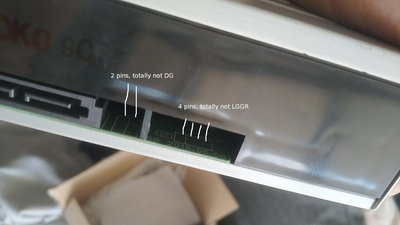First post, by moog
- Rank
- Newbie
Hi,
I asked this on Reddit before in this thread - https://www.reddit.com/r/AskTechnology/commen … not_have_audio/
Due to no response and no upvotes, I thought I'll ask in a place that obviously has more years of experience with hardware. Why is that so? I've noticed there are some parts on the back panel that kinda look like digital and analog audio hollow pins, so you could solder the interfaces yourself - but I wonder why is this not a thing? And are those things even what I think they are? See the attached photo.
Audigy 2 ZS in FreeDOS
LinLin adapter documentation
+ various capacitor list threads
